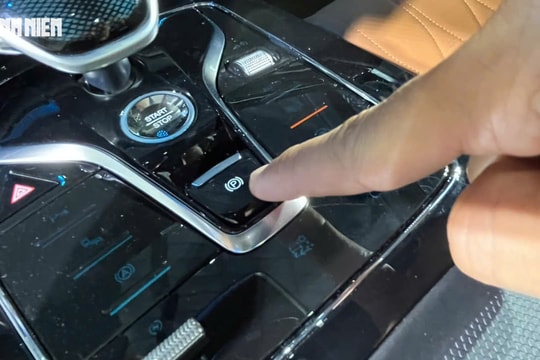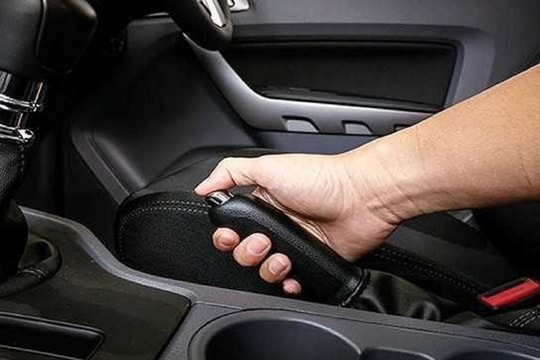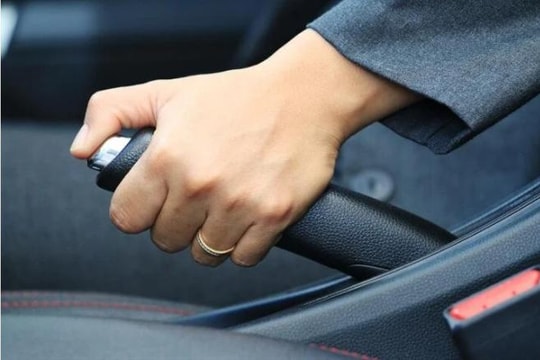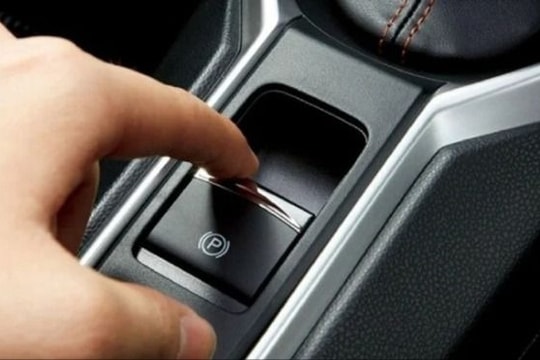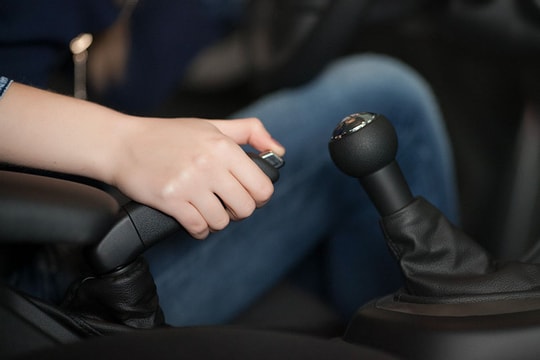Common mistakes of new drivers
Common mistakes new drivers make are: forgetting to turn on the mirrors, mistaking the accelerator for the brake, not knowing the direction when reversing...
Changing from motorbike to car is a big turning point for many Vietnamese people, so it is easy to see the mistakes that new car users often make.
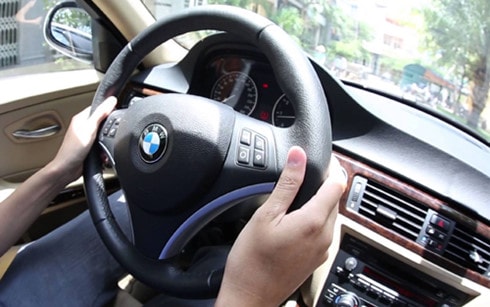 |
| New drivers often mistake the accelerator pedal for the brake pedal (Illustration: KT) |
For a new driver, stepping through the car door, sitting in the driver’s seat, holding the steering wheel, seems like a different world. There is no longer the open space like when riding a motorbike, no longer being able to turn around whenever you want to look.
Because of that, new drivers need a long time to get used to it and gain experience before becoming "experienced drivers".
Below are common mistakes new drivers make, according to experienced drivers and real-life feedback from new drivers.
Forgot to turn on the mirror and lower the handbrake
Because they haven't formed a habit yet, and partly because they're too focused on "making the car run", new drivers forget to perform the first, basic actions when sitting in the driver's seat, such as turning on the mirrors and releasing the handbrake. Many people only discover this when a passerby reminds them.
To avoid forgetting, new drivers should learn to pay attention to all these points before putting the key in the ignition. Turn on the mirrors, insert the key, put it in gear, release the handbrake and then start moving.
Unable to determine direction when reversing
The most common mistake is reversing to parallel park. Just one turn of the wheel, the car is diagonally aligned to park, and the new driver starts to panic, because when looking through the mirror, they do not know where the car is, how far it is from the wall, or from other cars.
To fix this error, there is no other way but to practice, use the skills shared on how to parallel park online to get used to it.
Nightmare when turning around in narrow streets
Turning around in a narrow street is a nightmare for all new drivers, especially when driving a manual transmission car, because it takes a lot of time, they don't dare to move the accelerator or clutch because of the constant flow of traffic, they are afraid of hitting someone else and sweating profusely.
To make a good U-turn in a narrow street, new drivers should be proactive, moving the car little by little instead of waiting, because the traffic in a narrow street is ready to squeeze in whenever there is a gap. Always pay attention to the mirrors, not only in the direction you need to go but also in the opposite direction.
Mistake the gas pedal for the brake pedal
In unexpected situations, instead of pressing the brake pedal, drivers press the accelerator pedal. Many drivers even in normal situations, slowing down to stop, but still press the wrong foot.
To avoid mistakes, you should learn to put your feet in a V shape, keeping your heel tilted towards the brake pedal, only turning your heel to use the toe to move the accelerator. Whenever you are not accelerating, you must immediately switch to resting your foot on the brake pedal, then if you are surprised, your reflex is to press straight, without making a mistake.
Always look at your watch when driving on the highway.
The dashboard in front of the new driver is still not really familiar, just a few strange signs light up, also make the new driver pay attention to observe. Especially when driving on the highway, because they are not used to the feeling of speed and accelerator, they often glance at the clock, afraid of exceeding the speed.
To limit this, new drivers should drive in the inside lane at a speed about 10 km/h below the maximum speed limit, so they can feel secure, not be afraid of overshooting, and focus on observing the road instead of being distracted by the dashboard.
Not knowing when to change the oil
Many people think that the engine oil must be changed at the first 1,000 km because they are afraid of metal "scraps" left over from the engine machining process. However, in reality, engine manufacturing technology is becoming more and more precise, even gaskets are gradually disappearing and replaced by sealant or nothing at all. Therefore, according to the manufacturer's recommendation, gasoline motorbikes should change oil at 6,000 km, and diesel engines at 5,000 km.
Break in new car
Coming from the past of using old technology motorbikes, many car owners are wondering how to run-in (break-in) their new cars. In fact, today's car manufacturing technology does not require running-in, many car manufacturers only recommend running at 80% load and maximum speed of the car for the first 1,000 km.
Wash the engine compartment in the usual way
Cars today use a lot of electronic technology to control the engine and auxiliary equipment, so having water in the engine compartment can easily lead to the risk of causing damage to the above electronic equipment. Therefore, you should only wash with professional tools and absolutely do not use water.
Inflate car tires like motorbike tires
Many people still think that a motorbike weighing more than 100 kg needs to be inflated to 3~4 kg/cm2, so a car weighing a ton needs to be inflated at least as much as a motorbike. In fact, car manufacturers recommend that tire pressure should only be 2~2.5 kg/cm2, which is enough to keep the tire durable and run smoothly.
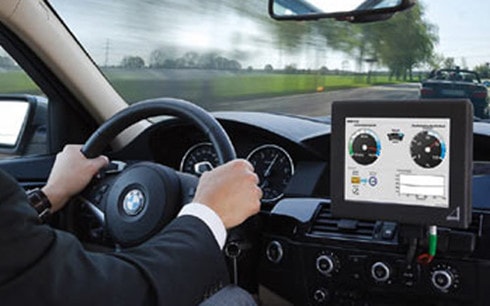 |
| New drivers should learn from each mistake to avoid unfortunate accidents (Illustration: KT) |
Turn off the air conditioner before turning off the engine and turn it back on after starting the engine.
This is only true for “old” cars or cars with air conditioning systems that have been “modified” by unprofessional mechanics. This experience is passed down by word of mouth from “old drivers” and is still popular today. In fact, the air conditioning system on today’s cars will not work during the start-up process and will only work after the engine has been started for a few seconds.
Wrong fuel
Based on the ability to burn and self-ignite of these two fuels and based on proven facts, if a diesel motorbike is filled with the wrong fuel and runs a few dozen kilometers, it only needs to be replaced with a new fuel to be stable again. With a gasoline motorbike filled with the wrong fuel, if not detected early, the entire engine and many other auxiliary equipment can be "destroyed".
Use headphones to use the phone instead of using your hands
Many people think that driving a car while using a phone is very dangerous, this is completely correct. But some drivers think of using a headset to make calls so that both hands can drive safely. This is only a little better than listening to the phone by hand because you have two hands to drive, but the danger is still the same. Because when listening to the phone for a long time, you will lose focus and cannot judge dangerous situations.
Do not lock the car door while driving
Many people worry that if they lock the door and something happens, someone else can easily open the door from the outside and quickly rescue them from the car. This is very reasonable, but if you do not lock the door while driving, the risk of you being thrown out of the car or the door opening and hitting someone else causing an accident is even higher. If you are driving, the probability of this happening to you is very low, but if other people sitting in the car can only lean on the door to sleep or someone accidentally opens the door latch, especially a child, then clearly an accident will happen./.
According to VOV

